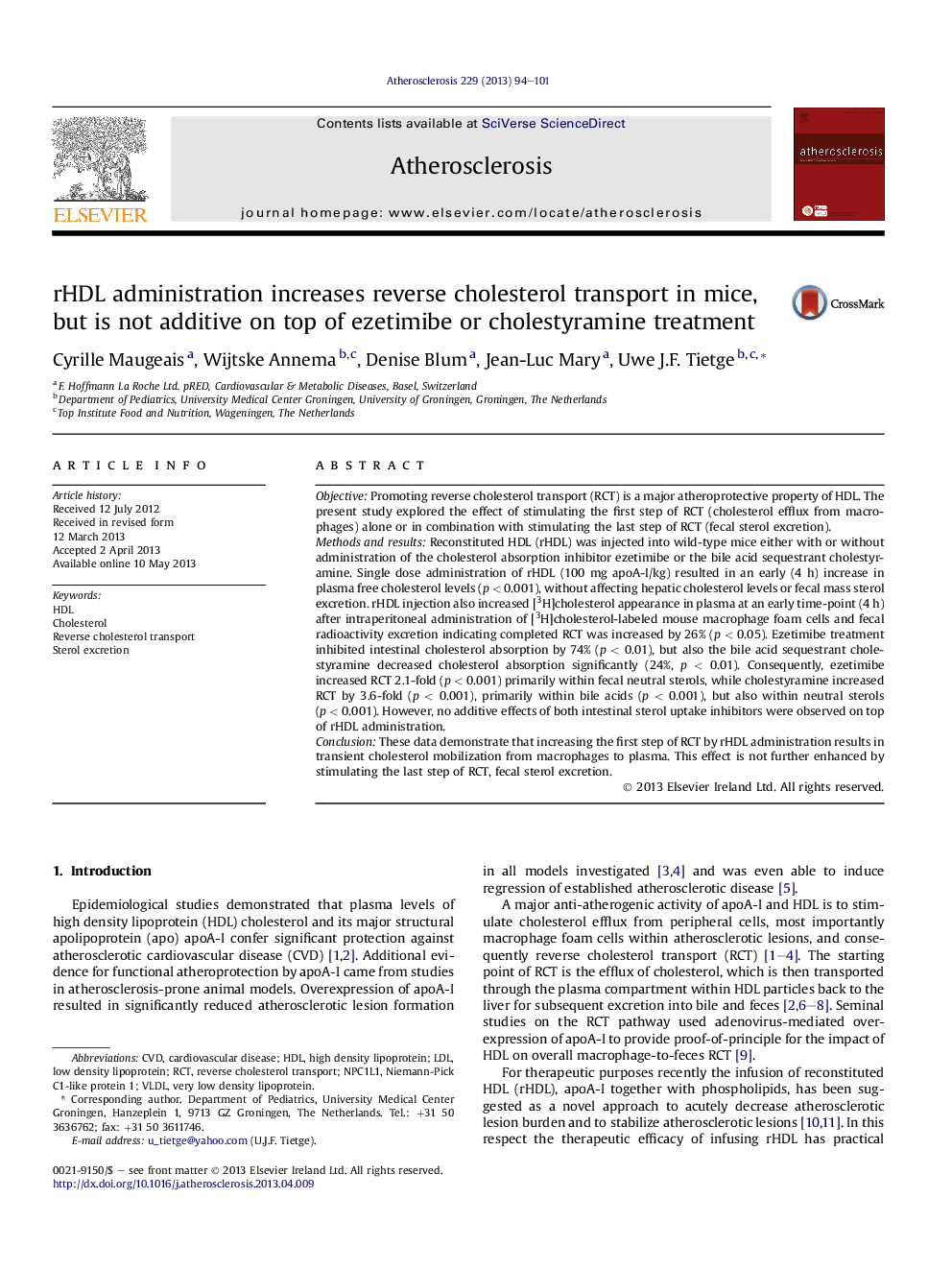| کد مقاله | کد نشریه | سال انتشار | مقاله انگلیسی | نسخه تمام متن |
|---|---|---|---|---|
| 5947833 | 1172374 | 2013 | 8 صفحه PDF | دانلود رایگان |

- Stimulating cholesterol efflux by rHDL administration rapidly mobilizes cholesterol to plasma.
- rHDL significantly increases reverse cholesterol transport (RCT).
- Both ezetimibe and cholestyramine significantly enhance RCT.
- Inhibiting intestinal sterol uptake is not additive to rHDL administration to increase RCT.
ObjectivePromoting reverse cholesterol transport (RCT) is a major atheroprotective property of HDL. The present study explored the effect of stimulating the first step of RCT (cholesterol efflux from macrophages) alone or in combination with stimulating the last step of RCT (fecal sterol excretion).Methods and resultsReconstituted HDL (rHDL) was injected into wild-type mice either with or without administration of the cholesterol absorption inhibitor ezetimibe or the bile acid sequestrant cholestyramine. Single dose administration of rHDL (100 mg apoA-I/kg) resulted in an early (4 h) increase in plasma free cholesterol levels (p < 0.001), without affecting hepatic cholesterol levels or fecal mass sterol excretion. rHDL injection also increased [3H]cholesterol appearance in plasma at an early time-point (4 h) after intraperitoneal administration of [3H]cholesterol-labeled mouse macrophage foam cells and fecal radioactivity excretion indicating completed RCT was increased by 26% (p < 0.05). Ezetimibe treatment inhibited intestinal cholesterol absorption by 74% (p < 0.01), but also the bile acid sequestrant cholestyramine decreased cholesterol absorption significantly (24%, p < 0.01). Consequently, ezetimibe increased RCT 2.1-fold (p < 0.001) primarily within fecal neutral sterols, while cholestyramine increased RCT by 3.6-fold (p < 0.001), primarily within bile acids (p < 0.001), but also within neutral sterols (p < 0.001). However, no additive effects of both intestinal sterol uptake inhibitors were observed on top of rHDL administration.ConclusionThese data demonstrate that increasing the first step of RCT by rHDL administration results in transient cholesterol mobilization from macrophages to plasma. This effect is not further enhanced by stimulating the last step of RCT, fecal sterol excretion.
Journal: Atherosclerosis - Volume 229, Issue 1, July 2013, Pages 94-101